Are you feeling overwhelmed when it comes to choosing the perfect colors for your living space? Look no further! In this guide, we will explore the steps to finding your ideal feng shui colors. From understanding the meaning behind each color to utilizing the feng shui color chart, you'll gain valuable insights and tips to enhance positive energy and create harmony in your home.
Understanding the Meaning of Feng Shui Colors
Before diving into finding your feng shui colors, it's essential to grasp the meanings behind different colors in feng shui. Colors have a profound influence on our emotions, energy, and overall well-being. By understanding how each color can impact your environment, you can create a harmonious space that promotes positive energy.
In feng shui, each color carries a specific meaning:
- Red: Passion, Energy, Excitement
- Orange: Creativity, Vitality, Warmth
- Yellow: Optimism, Clarity, Joy
- Green: Growth, Healing, Balance
- Blue: Calmness, Stability, Trust
- Purple: Spirituality, Wisdom, Luxury
- Black: Strength, Protection, Mystery
- White: Purity, Innocence, Clarity
It's important to note that the meaning of each color can vary depending on cultural and personal associations. When choosing feng shui colors for your home, consider the intended use of the space and the energy you wish to cultivate. For example, if you want to create a nurturing and calming atmosphere in your bedroom, soothing blues and greens would be more suitable than bright reds or yellows. Take the time to reflect on how each color makes you feel and what kind of energy it brings into your environment. This will help you make informed and intentional color choices for your living spaces.
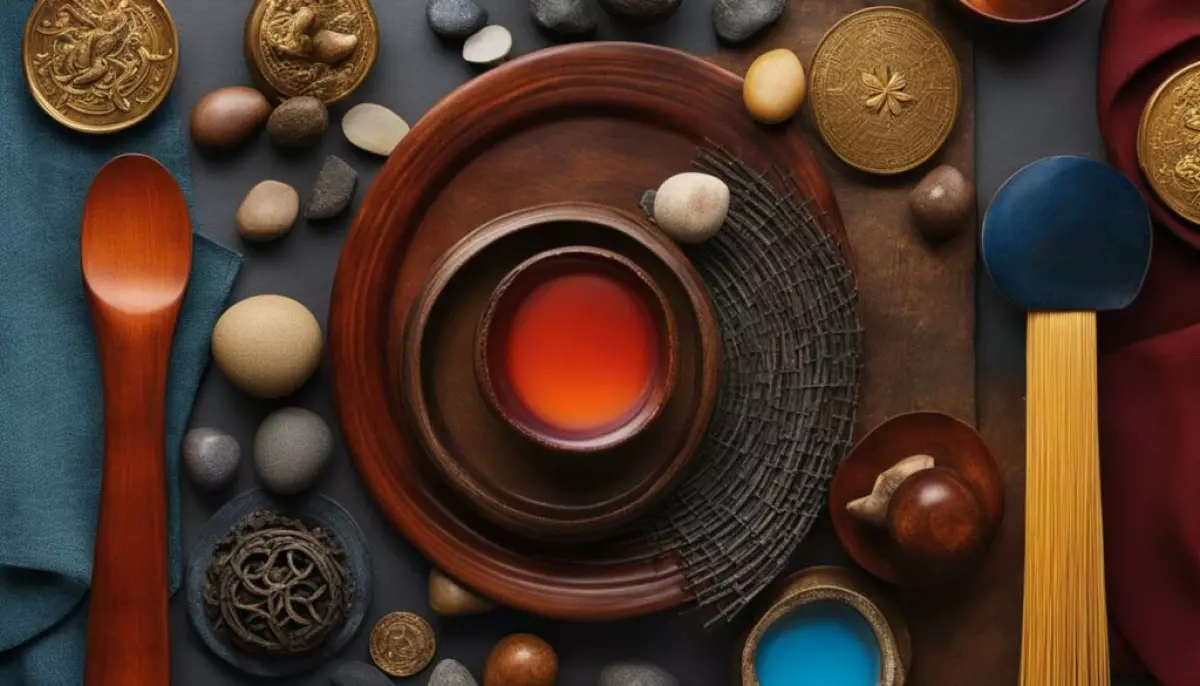 Caption: Feng Shui Color Meanings
Caption: Feng Shui Color Meanings
Exploring the Feng Shui Color Chart
In feng shui, colors are grouped into five elements: Water, Wood, Fire, Earth, and Metal. Each element is associated with specific colors that promote different energies in your environment. The feng shui color chart acts as a guide to help you identify these colors and their corresponding elements.
To find the perfect feng shui colors for your home, it's important to first understand the purpose of each room. Once you have determined the intended function of the room, you can begin to explore the appropriate feng shui colors to use.
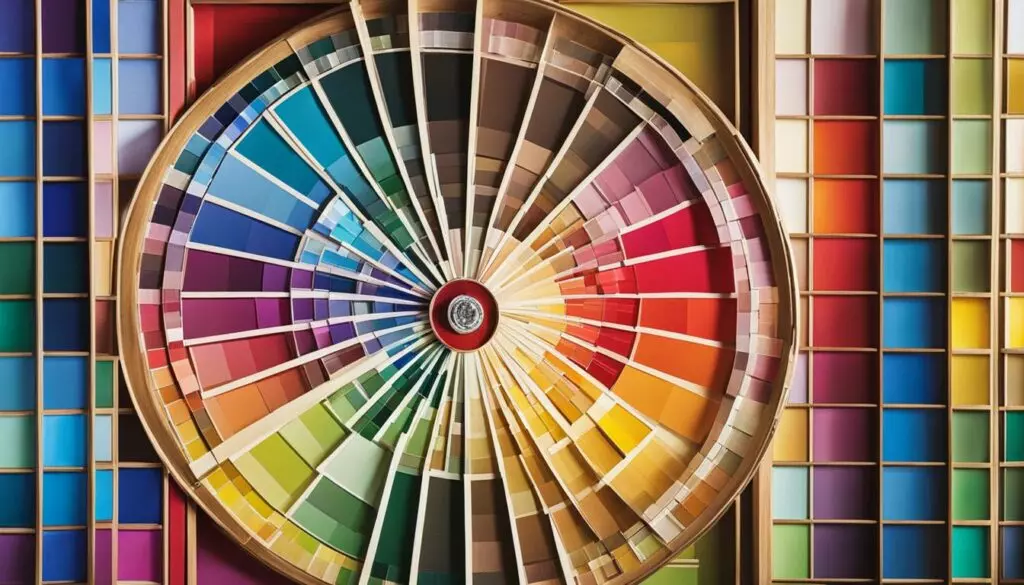 Caption: Feng Shui Color Chart
Caption: Feng Shui Color Chart
The feng shui color chart consists of a wheel that displays the five elements and their corresponding colors. Each color is arranged in a spectrum from light to dark shades. It's important to note that each color can have both positive and negative associations, depending on its placement and intensity.
When using the feng shui color chart, consider the following:
- Start with the intended function of the room.
- Choose colors based on the corresponding element and its properties.
- Consider the placement and intensity of the colors.
- Ensure a balance of colors to promote harmony and balance.
The feng shui color chart is a valuable tool to help you find the perfect colors for your home and create a balanced and harmonious environment. Take your time to explore the different colors and their meanings, and have fun incorporating them into your living spaces!
Assessing Your Personal Energy
To find your perfect feng shui colors, it's essential to understand your personal energy and how it aligns with feng shui principles. Begin by assessing your birth element to get a deeper insight into your individual energy.
To determine your birth element:
- Refer to the Feng Shui Five Elements Chart and identify the element that corresponds to your birth year.
- If you were born in January or February, cross-reference the year of your birth with the Lunar New Year to get your correct birth element.
- Once you have identified your birth element, you can explore the corresponding feng shui colors that are best suited for you.
Understanding your birth element is the foundation for choosing feng shui colors that will harmonize with your energy. For example, if your birth element is Wood, colors such as green or brown can create a nurturing environment that promotes growth and prosperity. On the other hand, if your birth element is Fire, colors such as red or orange can create a vibrant and passionate atmosphere. The key is to choose colors that balance and enhance your energy, rather than clash with it.
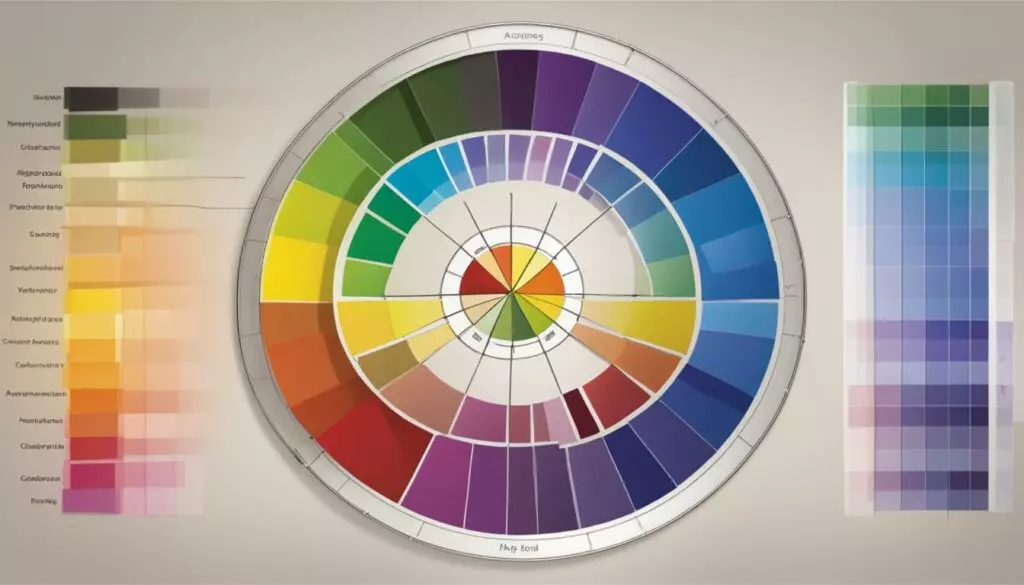 Caption: How to Find Your Feng Shui Colors
Caption: How to Find Your Feng Shui Colors
Discovering Your Personal Color Element
Based on your personal energy and birth element, you can determine your ideal feng shui colors. Your personal color element is associated with the five elements of feng shui: wood, fire, earth, metal, and water.
To find out your personal color element, check your year of birth in the table below:
| Element | Years | Color |
|---|---|---|
| Wood | 1954, 1963, 1972, 1981, 1990, 1999, 2008, 2017 | Green |
| Fire | 1956, 1965, 1974, 1983, 1992, 2001, 2010, 2019 | Red, orange, yellow, pink, purple |
| Earth | 1957, 1966, 1975, 1984, 1993, 2002, 2011, 2020 | Light yellow, brown |
| Metal | 1958, 1967, 1976, 1985, 1994, 2003, 2012, 2021 | White, silver, gold |
| Water | 1955, 1964, 1973, 1982, 1991, 2000, 2009, 2018 | Blue, black |
If your birth year is not listed, you can use the nearest year to determine your personal color element. For example, if you were born in 1959, you can choose the metal element since it is the closest element to the year 1958.
Once you have identified your personal color element, you can start incorporating it into your decor. For example, if your personal color element is wood, you can add green accents throughout your home to enhance positive energy and balance.
 Caption: How to Find Your Feng Shui Colors
Caption: How to Find Your Feng Shui Colors
Creating Harmony with Feng Shui Colors for Home
Feng shui colors play a crucial role in creating harmonious and balanced living spaces. When it comes to selecting colors for different areas of your home, there are a few key factors to consider.
Firstly, think about the purpose of the space and the energy you want to promote. For example, in the bedroom, you may want to choose calming, soothing colors that promote relaxation and restful sleep. In contrast, for the kitchen, you may want to opt for energetic, vibrant colors that stimulate creativity and appetite.
Additionally, consider the color combinations you use in each room. Harmonizing colors that complement each other can create a cohesive and balanced feel. On the other hand, using clashing colors can create a sense of chaos and discomfort.
To choose feng shui colors for your home, start by identifying the element associated with each area of your space, as outlined in the feng shui color chart. From there, look for colors that correspond with your personal element and align with your desired energy. Keep in mind that the colors you choose should bring you joy and reflect your personal style.
Here are some popular feng shui color combinations for different areas of your home:
| Room | Colors | Meaning |
|---|---|---|
| Bedroom | Light blue, green, lavender, peach | Calming, restful |
| Living Room | Earth tones, beige, white, yellow, orange | Warm, welcoming |
| Bathroom | White, silver, gray, blue | Clean, refreshing |
| Kitchen | Red, orange, yellow, green | Energetic, appetizing |
Remember, the feng shui colors you choose for your home should make you feel happy, comfortable, and at ease. By incorporating these colors into your living spaces, you can create a harmonious and balanced environment that promotes positive energy and well-being.
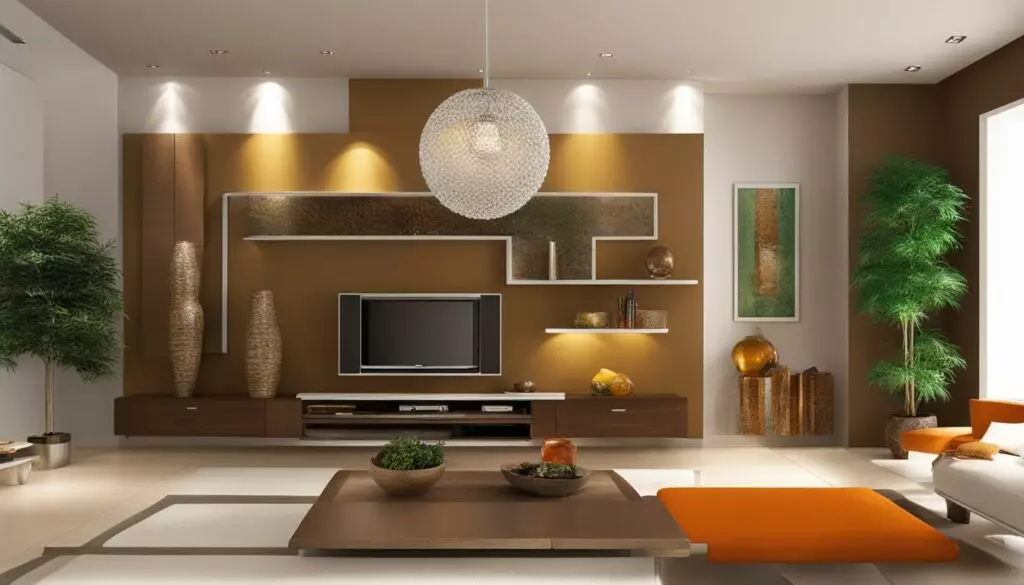 Caption: Feng Shui Colors for Home
Caption: Feng Shui Colors for Home
Using Feng Shui Colors to Enhance Your Mood
Colors have a profound effect on our emotions and can influence our mood in many ways. By utilizing feng shui colors, you can create spaces that promote relaxation, productivity, and overall well-being. Here are some feng shui tips for using colors to enhance your mood:
- Red: This color is associated with passion, excitement, and energy. However, it can also be overwhelming in large amounts. Use red sparingly in areas where you want to promote vitality, such as the kitchen or living room.
- Yellow: Yellow is a cheerful and uplifting color that can promote optimism and positivity. It's an excellent choice for areas where you want to stimulate creativity and socialization, such as a home office or dining room.
- Green: Green is a calming and soothing color that promotes balance and growth. It's ideal for areas where you want to promote relaxation and tranquility, such as the bedroom or bathroom.
- Blue: Blue is a calming color that promotes peace and tranquility. It's an excellent choice for areas where you want to promote rest and relaxation, such as the bedroom or meditation room.
- Purple: Purple is a spiritual color that promotes intuition and creativity. It's an excellent choice for areas where you want to promote introspection and self-awareness, such as the study or library.
Remember to choose colors that resonate with your personal energy and align with your desired feng shui intentions. By using feng shui colors effectively, you can create spaces that promote positive energy and enhance your mood.
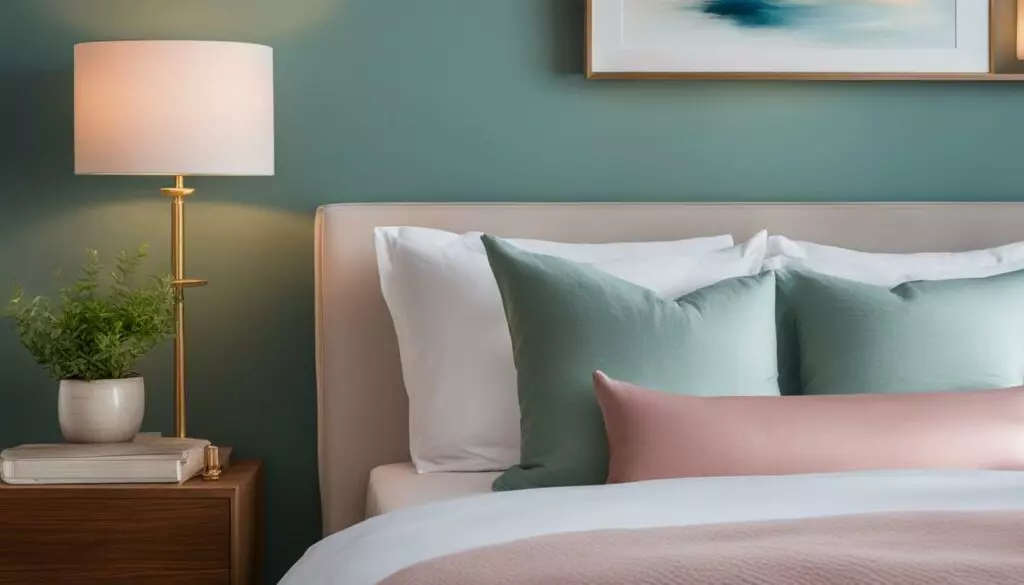 Caption: Using Feng Shui Colors to Enhance Your Mood
Caption: Using Feng Shui Colors to Enhance Your Mood
Incorporating Feng Shui Colors in Home Decor
Colors play a vital role in creating a positive and harmonious environment in your home. It's essential to use colors that resonate with your personal energy and enhance your overall well-being. Here are some practical tips on incorporating feng shui colors into your home decor:
Feng Shui Color Psychology
Before choosing specific colors, it's worth understanding the psychology behind feng shui colors. Different colors can evoke various emotions and create distinct energy in a room. For instance, red is associated with passion and stimulates energy, while blue represents calmness and tranquility.
When incorporating feng shui colors into your decor, it's crucial to consider the purpose of each room. For example, if you're decorating your bedroom, it's recommended to choose calming and soothing colors, such as pastels or neutral colors, to promote relaxation and sleep.
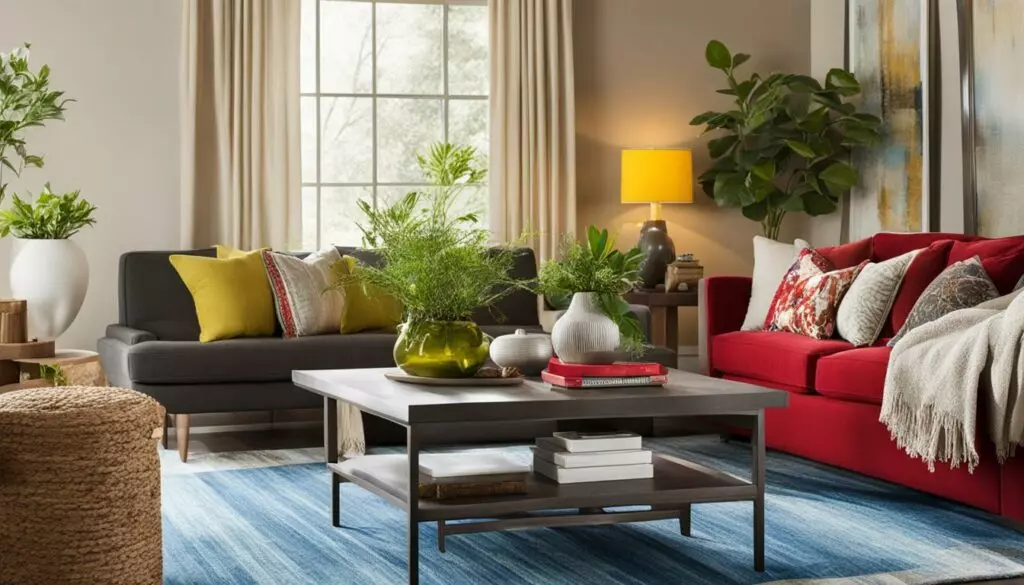 Caption: Feng Shui Colors in Home Decor
Caption: Feng Shui Colors in Home Decor
Using Feng Shui Colors in Accessories
One of the easiest ways to incorporate feng shui colors into your home decor is through accessories. You can add cushions, curtains, rugs, or wall art that feature your chosen colors. This can instantly transform a room and infuse positive energy into your living spaces.
Using Feng Shui Colors in Furniture
Similarly, furniture with specific colors can create a particular energy in your living spaces. For instance, a green sofa can evoke a sense of harmony and balance, while a red chair can add excitement and passion to a room. Consider incorporating furniture pieces that align with your desired feng shui color scheme.
Creating a Balanced Color Scheme
While it's important to incorporate your preferred feng shui colors, it's also essential to maintain balance and harmony. For example, if you have a predominantly blue living room, adding a few orange or yellow accessories can create a harmonious balance of energy. Remember, balance is key to creating a positive and harmonious living space.
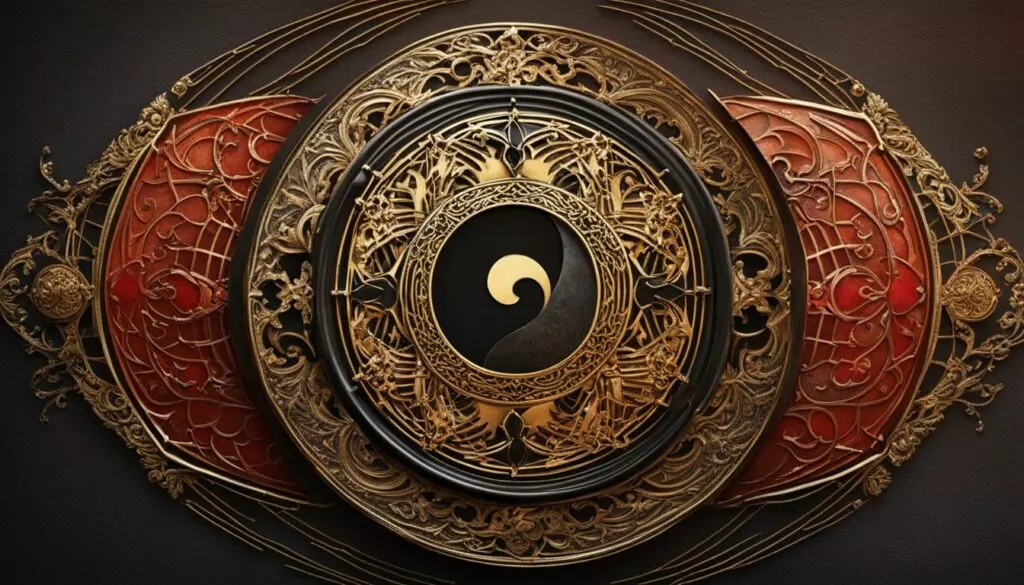 Caption: Feng Shui Colors in Home Decor
Caption: Feng Shui Colors in Home Decor
Balancing Yin and Yang Energies with Colors
In feng shui, the concept of Yin and Yang represents the balance of opposing energies in our living spaces. Yin represents passive and calming energy, while Yang symbolizes active and energizing energy. To create a harmonious environment, it's essential to balance these energies with the right colors.
Some colors are associated with Yin energy, such as blue, green, and purple. These colors promote relaxation and calmness, making them ideal for bedrooms and living rooms. On the other hand, colors like red, orange, and yellow are associated with Yang energy. These colors promote activity and excitement, making them suitable for home offices and kitchens.
However, it's crucial not to go overboard with Yang colors, as they can create excess energy and lead to stress and anxiety. Similarly, too much Yin energy can result in sluggishness and lethargy. Therefore, it's essential to find a balance between the two energies to promote a sense of tranquility and vitality.
Yin-Yang Color Combinations
Some color combinations can help balance Yin and Yang energies in your home. For instance, a room with predominantly Yin colors can benefit from a splash of Yang color to liven up the space. Similarly, a predominantly Yang-colored room can benefit from the addition of soft Yin colors to balance the energy.
- Blue and Red: A blue bedroom with a red accent wall.
- Green and Orange: A green living room with orange throw pillows.
- Purple and Yellow: A purple meditation room with yellow candles.
By incorporating color combinations that balance Yin and Yang energies, you can promote a sense of harmony and balance in your living spaces. Remember, the key to using feng shui colors to balance Yin and Yang energies is moderation. Use colors thoughtfully and in appropriate amounts to achieve the desired effect on your environment and overall well-being.
 Caption: Using Feng Shui Colors to Balance Yin and Yang Energies
Caption: Using Feng Shui Colors to Balance Yin and Yang Energies
Enhancing Prosperity and Wealth with Feng Shui Colors
According to feng shui principles, specific colors are associated with attracting wealth and abundance. Incorporating these colors into your home can create a harmonious environment that promotes prosperity and financial success.
One color commonly associated with wealth and prosperity is red. This vibrant color represents fire and is believed to stimulate energy, passion, and good fortune. Consider adding red accents to your living room or dining area through decorative elements such as curtains, throw pillows, or a statement piece of artwork.
Purple is another color associated with wealth and abundance in feng shui. This regal color represents luxury and elegance and is believed to enhance one's financial luck. Consider incorporating purple hues into your bedroom or office for a touch of prosperity.
Green is also an excellent color choice for attracting wealth and abundance. This color represents growth and vitality and is believed to promote financial stability. Consider adding plants or green accents to your living room or kitchen to invite prosperity into your home.
Remember, the key to enhancing prosperity and wealth with feng shui colors is balance. It's essential to incorporate these colors in moderation and in harmony with other hues in your home. By doing so, you can create a favorable environment that attracts abundance and positive energy.
Applying Feng Shui Colors for Health and Well-Being
Colors can have a significant impact on our health and well-being, and feng shui colors are no exception. Choosing the right colors for your living spaces can help promote vitality, balance, and a positive outlook on life. When deciding how to choose feng shui colors for your home, it's important to consider the needs and energy of your family members.
One way to promote health and well-being in your home is to incorporate colors that are associated with healing and relaxation. These colors include green, blue, and purple. Green is particularly effective for promoting physical and emotional balance, while blue is known for its calming effects. Purple is associated with spiritual growth and can help enhance meditation and mindfulness practices.
Another important factor to consider when selecting feng shui colors for health and well-being is your personal energy. As mentioned earlier, each individual has a personal color element that resonates with their energy. By incorporating your personal color element into your home decor, you can create a space that feels balanced and supportive.
When it comes to the bedroom, it's important to choose colors that promote rest and relaxation. Soft, muted colors such as lavender, pale blue, and sage green are ideal choices for creating a calming atmosphere. Avoid bright or bold colors that can be overstimulating and disruptive to sleep.
Lastly, remember that feng shui is all about balance. While it's important to incorporate colors that promote healing and vitality, it's also essential to consider the overall color scheme of your home. Too much of one color can create an unbalanced and overwhelming energy. Strive to create a harmonious color palette that incorporates a variety of hues and shades to promote balance and positive energy.
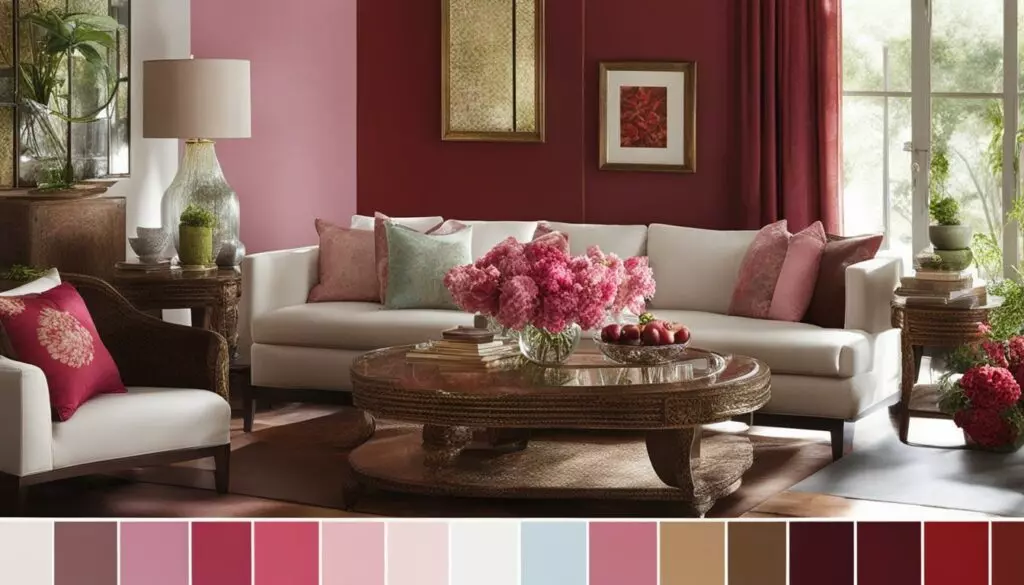 Caption: Feng Shui Colors for Health and Well-Being
Caption: Feng Shui Colors for Health and Well-Being
Balancing Individual and Family Needs
Finding the perfect feng shui colors involves not only considering individual preferences but also taking into account the needs and energy of your family members. Each person in your household has their own energy, and it's essential to create a harmonious color scheme that caters to everyone.
One way to balance individual and family needs is to identify the colors that correspond with each family member's personal energy. If your partner has a fire element in their birth chart, for example, incorporating some red or orange hues in the bedroom can enhance their energy and create a sense of passion and warmth. Similarly, if your child has a water element, adding some blue or black accents to their room can promote a sense of calmness and relaxation.
Another approach is to choose colors that represent harmony and balance. Earthy tones such as browns and greens can create a sense of stability and grounding, making them an excellent choice for shared family spaces like the living room or kitchen.
Ultimately, finding the right feng shui colors for your home involves a balance between personal preference, family needs, and feng shui principles. Take the time to assess your family's energy and create a color scheme that promotes harmony and positive energy for everyone.
Visualizing Your Color Scheme
One helpful tool for visualizing your feng shui color scheme is creating a mood board. Use magazines, paint chips, and fabric samples to put together a collage of colors and textures that represent your ideal living space. This can give you a better sense of how different colors and patterns work together and help you make informed decisions about your home decor.
Remember, your feng shui color choices should reflect your individual tastes and preferences while promoting positive energy and balance in your living spaces.
Implementing Your Chosen Feng Shui Colors
Now that you have identified your ideal feng shui colors, it's time to implement them in your home. Here are some practical tips to help you get started:
- Create a color scheme for each room based on your desired feng shui intention.
- Use paint, wallpaper, or textiles to add your chosen colors to the walls and decor.
- Incorporate feng shui colors through furniture, art, and accessories.
- Balance bright colors with neutral shades to create a harmonious environment.
- Consider the shape and flow of the room when placing colors and decor items.
- Use lighting to enhance your chosen colors and create a warm and inviting atmosphere.
Remember, the key to implementing feng shui colors successfully is to create a balanced and harmonious environment that suits your personal energy and intentions. Don't be afraid to experiment with different color combinations until you find the perfect mix for your home.
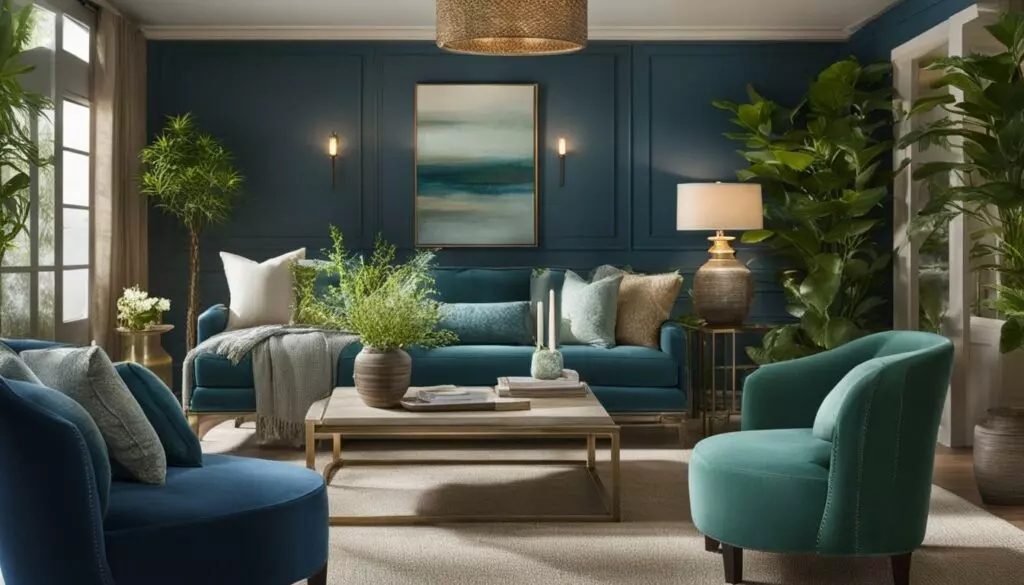 Caption: Feng Shui Colors for Home
Caption: Feng Shui Colors for Home
By incorporating your chosen feng shui colors into your home, you can enhance positive energy and create a balanced and harmonious environment. So go ahead and start implementing your feng shui color choices today!
Conclusion
By following the steps outlined in this guide, you should now have a better understanding of how to find your feng shui colors and utilize them to create a harmonious living space that promotes positive energy and balance. Remember to consider the meanings behind each color, assess your personal energy, and select hues that resonate with your feng shui intentions.
Exploring the feng shui color chart and discovering your personal color element are vital steps in finding the perfect feng shui colors for your home. Don't forget to balance yin and yang energies, incorporate colors that enhance your mood and well-being, and consider the needs of your family members when selecting colors.
Implementing your chosen feng shui colors can be an exciting and creative process. Whether it's through wall paint, furniture, or accessories, infusing positive energy and balance into your living spaces is essential for overall well-being.
Now that you know how to find your feng shui colors, it's time to unleash your creativity and transform your home into a space that inspires positivity and harmony.













